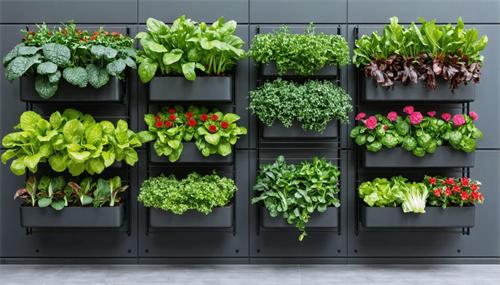
Vertical vegetable gardens offer a powerful solution for gardeners with limited space, combining aesthetic appeal, environmental benefits, and practical yields. This essay explores the key advantages of vertical gardening, strategies for selecting structures and plants, essential maintenance practices, common challenges and solutions, and inspiring case studies that showcase thriving vertical edible walls. By the end, you'll be equipped with the knowledge to turn even the tiniest balcony or patio into a productive green oasis.
Benefits of Vertical Vegetable Gardens
Vertical gardens can significantly enhance air quality around your home by increasing plant density per square foot, which helps filter pollutants and produce oxygen. They also improve accessibility, reducing the need to bend or kneel, making harvesting easier for gardeners of all ages and physical abilities. Furthermore, vertical gardens act as natural insulation, stabilizing indoor temperatures and potentially lowering heating and cooling costs. By elevating plants, gardeners can deter ground-dwelling pests and minimize soil-borne diseases, leading to healthier crops with reduced pesticide use.
Choosing the Right Structures
A sturdy trellis or frame is the backbone of any vertical garden; materials range from metal grids to wooden pallets, each offering unique durability and aesthetic qualities. Modular pocket planters made of felt or plastic provide flexible, lightweight systems ideal for balconies or interior walls. Hanging shoe organizers repurposed as plant pockets are an economical DIY option that maximizes vertical space without major installations. When selecting irrigation, drip systems with built-in reservoirs ensure consistent moisture and can be automated to reduce daily upkeep.
Best Plants for Vertical Gardens
Vining tomatoes thrive on trellises and deliver high yields in minimal space, making them a vertical staple. Cucumbers climb naturally, and vertical growth keeps fruits clean and straight while conserving soil area. Leafy greens—such as lettuce, spinach, and kale—perform well in pocket planters, allowing for quick succession plantings. Herbs like basil, parsley, and mint are compact and fragrant, perfect for adding flavor and aroma to kitchen-side gardens. Peas and pole beans use tendrils to latch onto supports, providing vertical interest and protein-rich harvests. Light-fruiting peppers also adapt to upward growth, benefiting from improved airflow and reduced rot.
Maintenance and Care
Consistent irrigation is critical; drip lines or self-watering systems help maintain even moisture without waterlogging. Regular pruning and trellis training prevent overcrowding and promote air circulation, reducing fungal risks. Fertilize vertical vegetables monthly with balanced, water-soluble nutrients to support vigorous growth in confined media. Monitor for pests—aphids and spider mites can colonize densely planted walls; introduce beneficial insects or apply neem oil as needed. Seasonal cleaning of filters and reservoirs ensures irrigation efficiency and prevents clogs in automated systems.
With thoughtful design and care, vertical vegetable gardens unlock the gardening potential of even the smallest spaces, offering bountiful harvests, environmental benefits, and striking green vistas that enrich daily life.
Recommend:

Local Flavor: A Culinary Odyssey in Mexico City

What is the best age for children to wear braces?

Cappadocia Balloon Ride: Cost & Info You Need To Know

Research finds that desert microbes improve drought tolerance when needed

